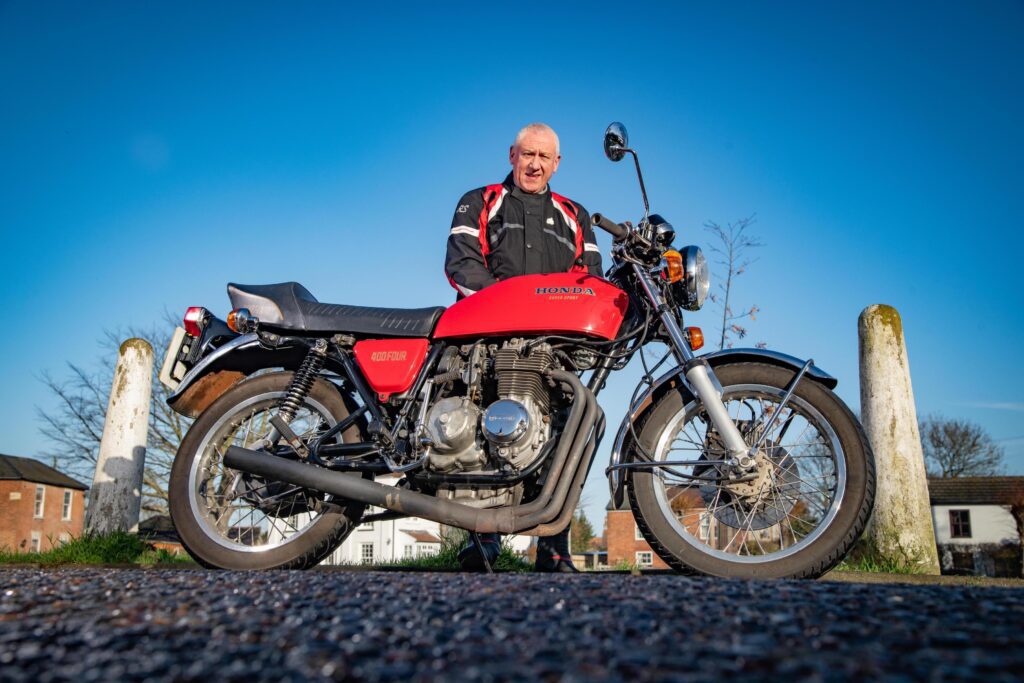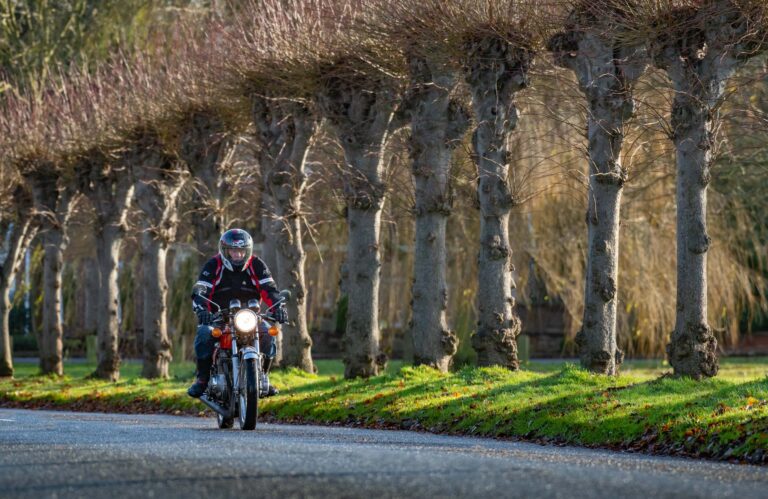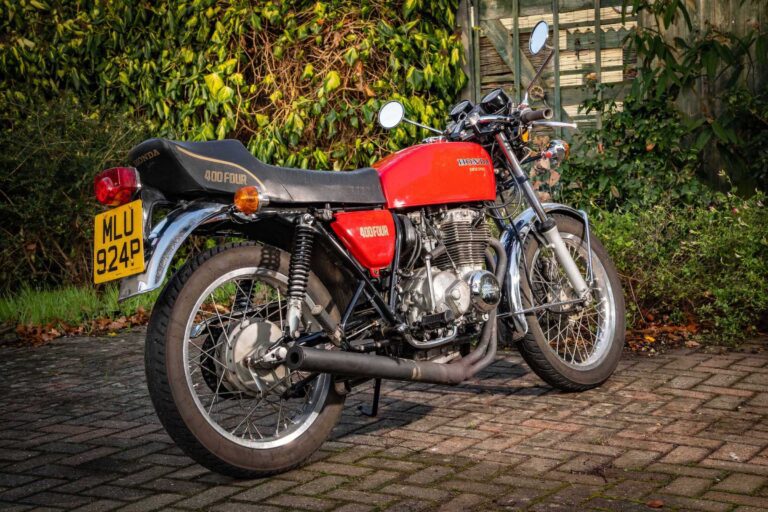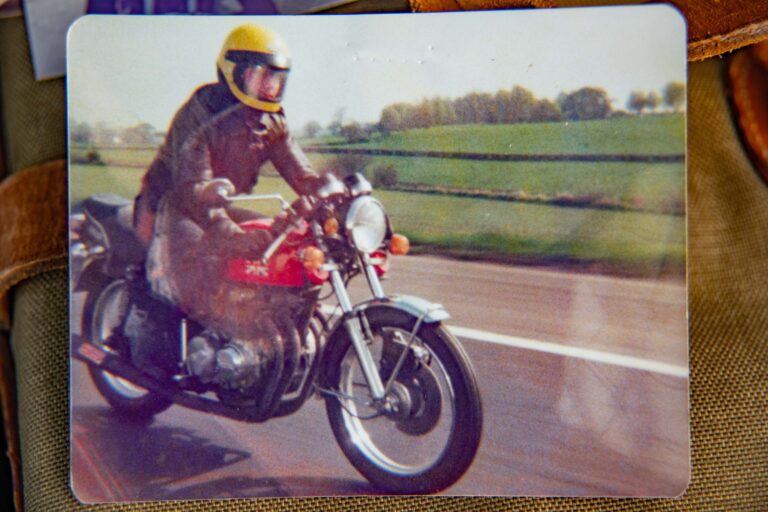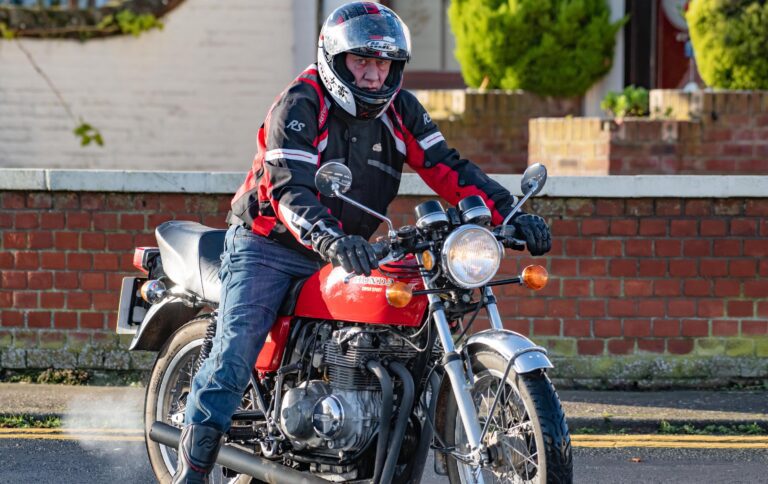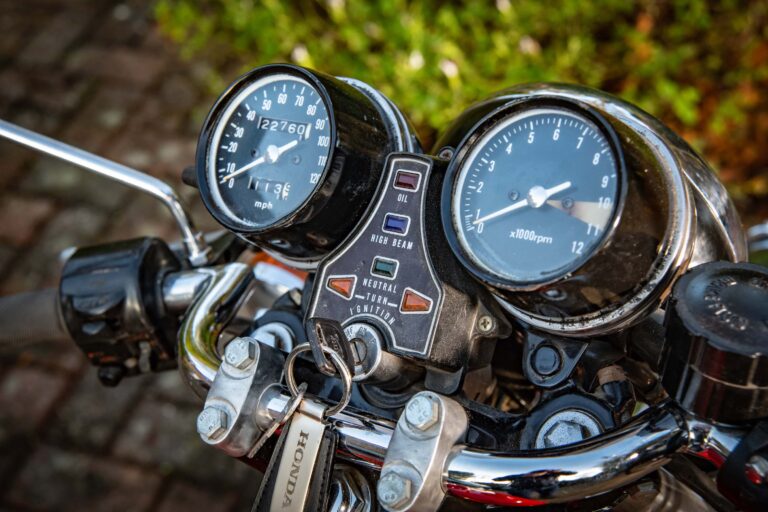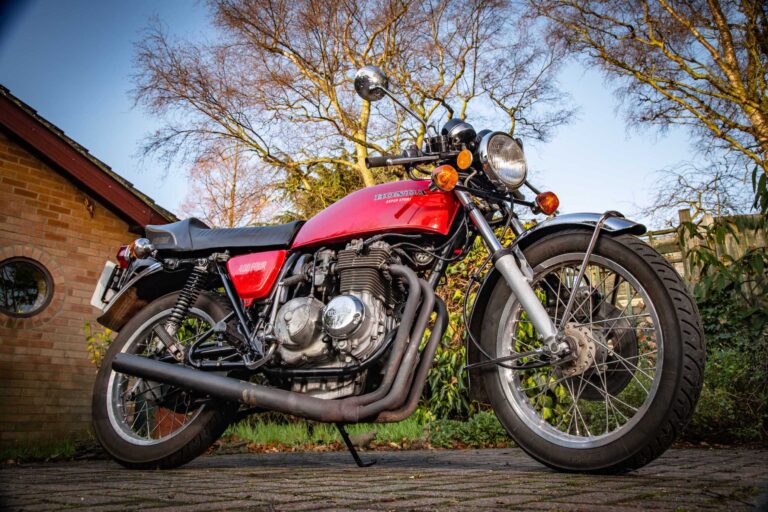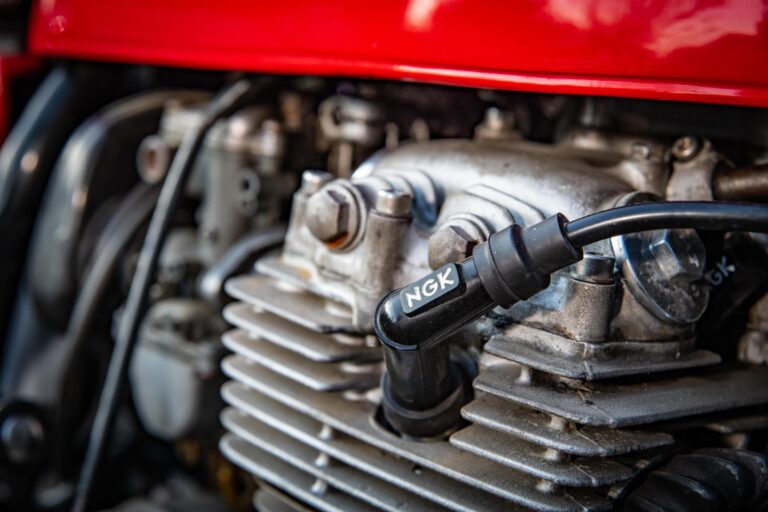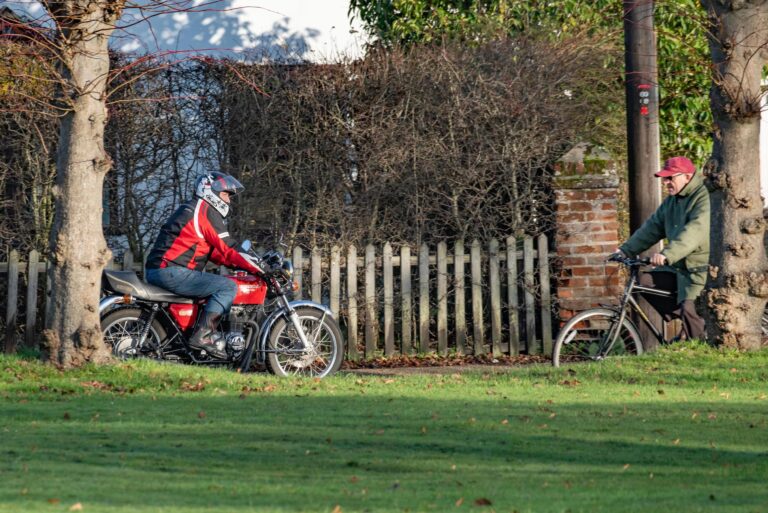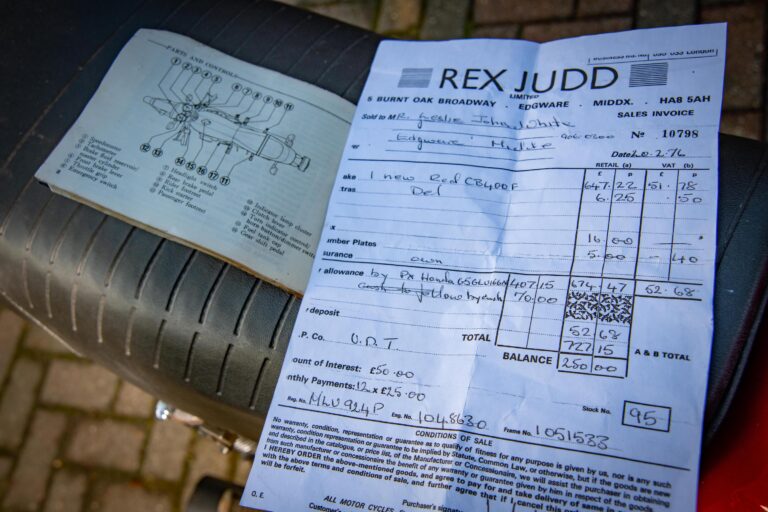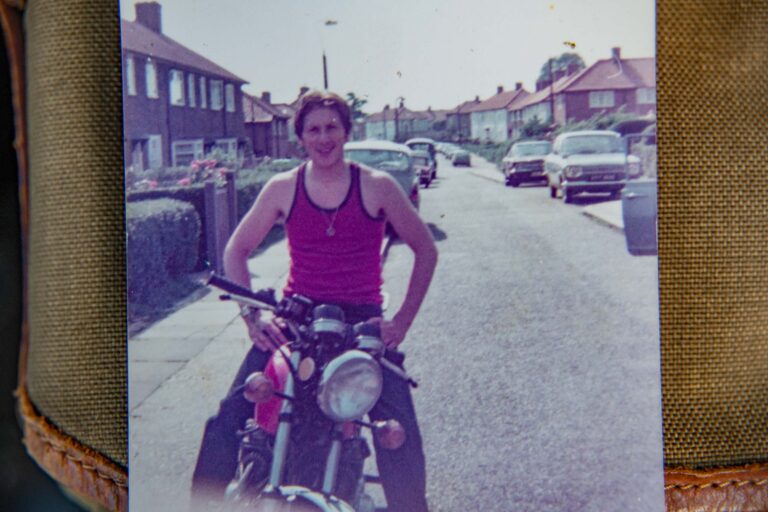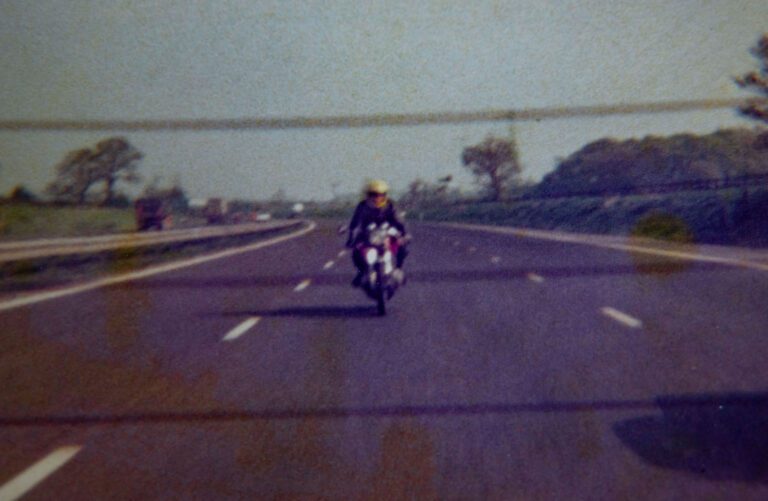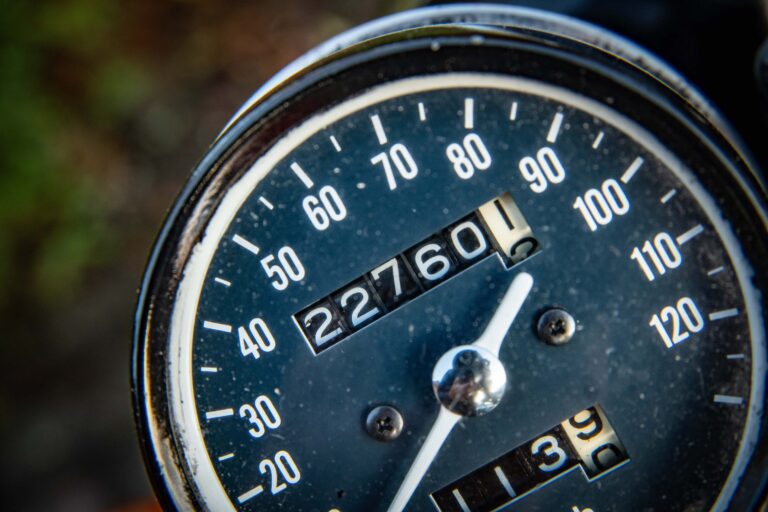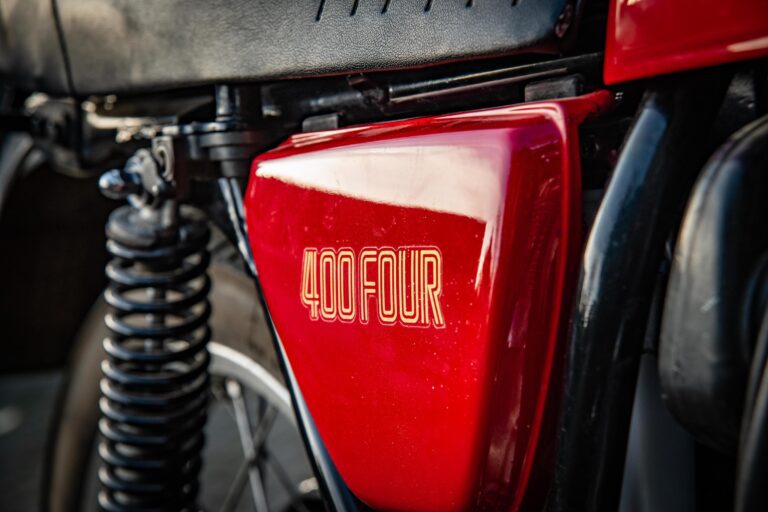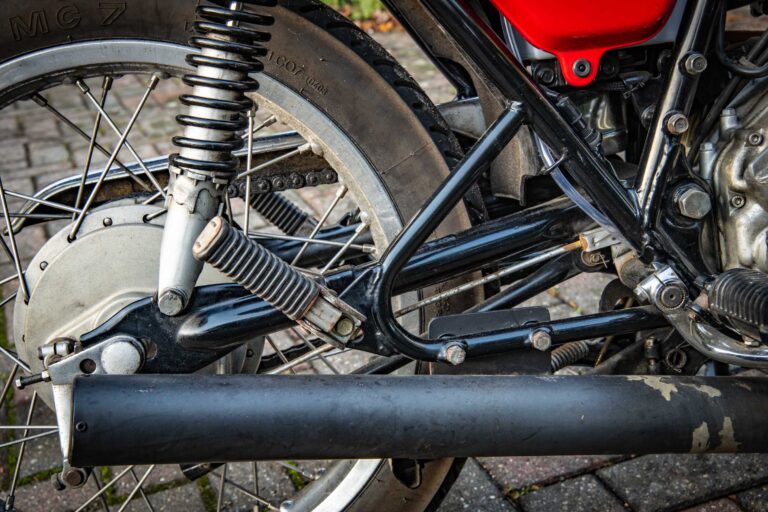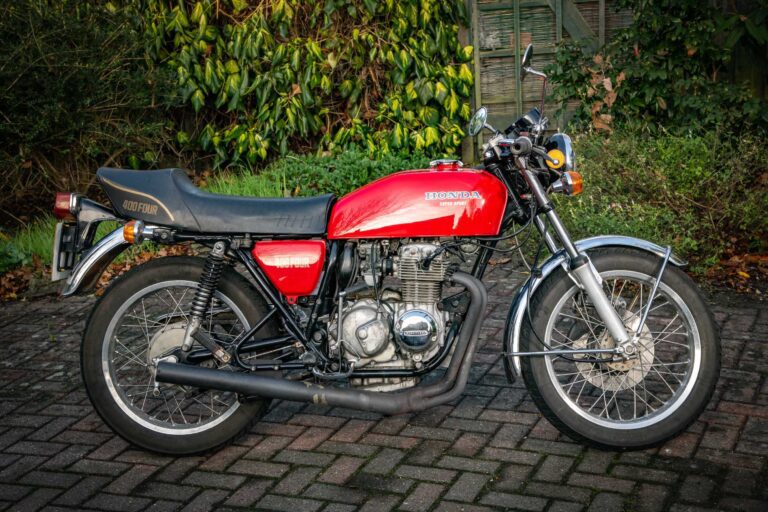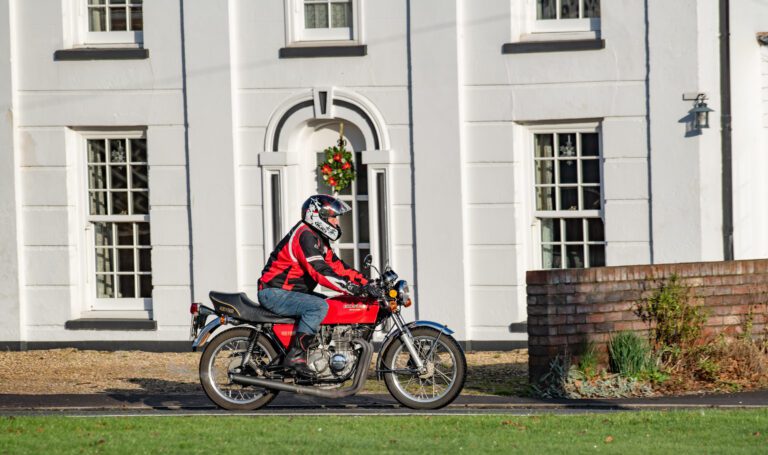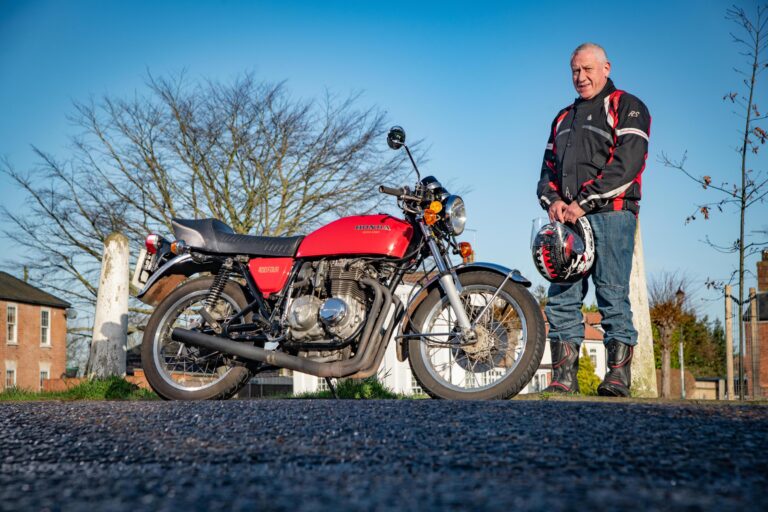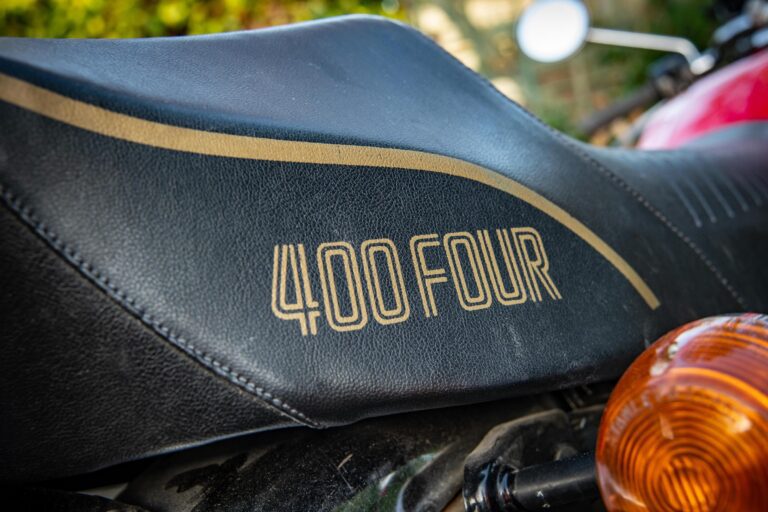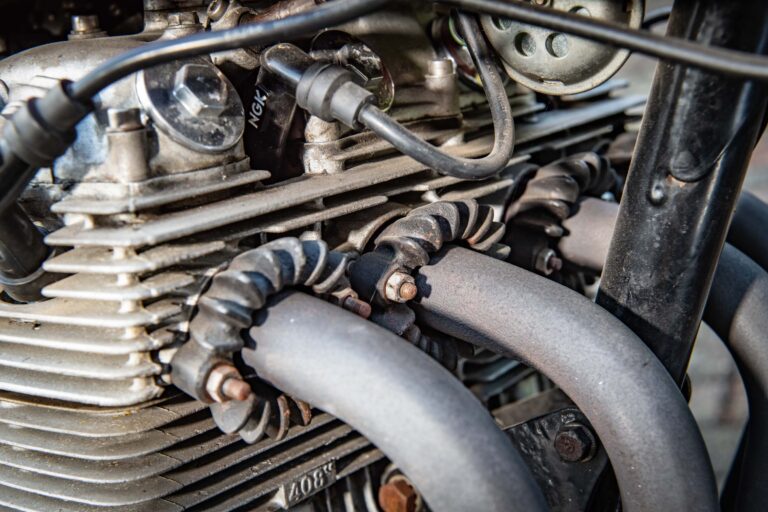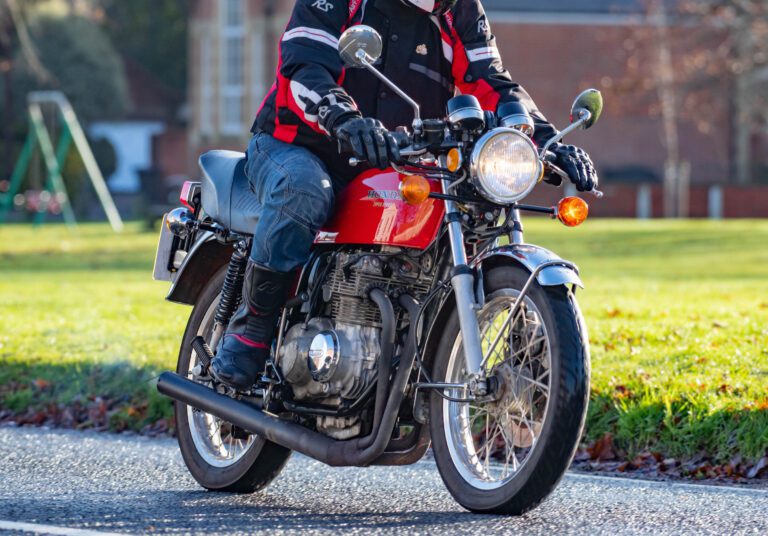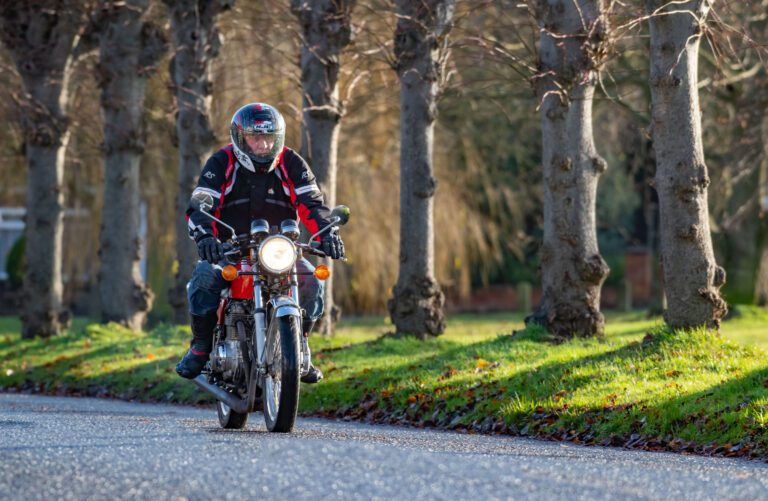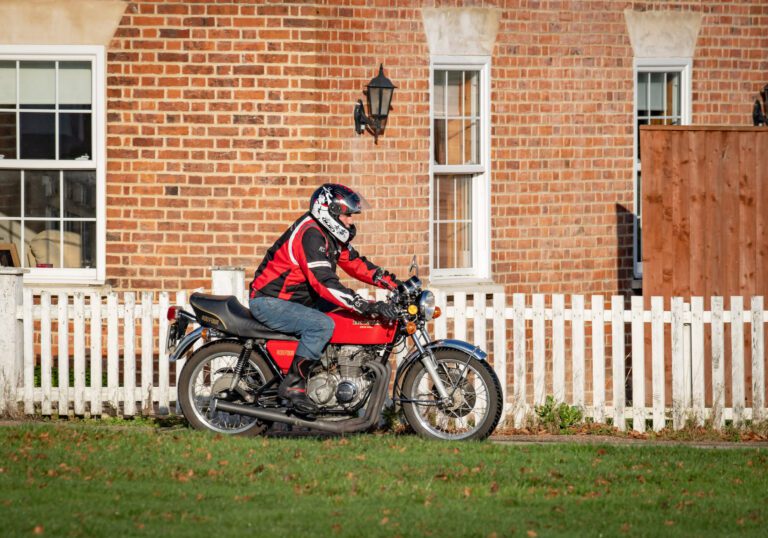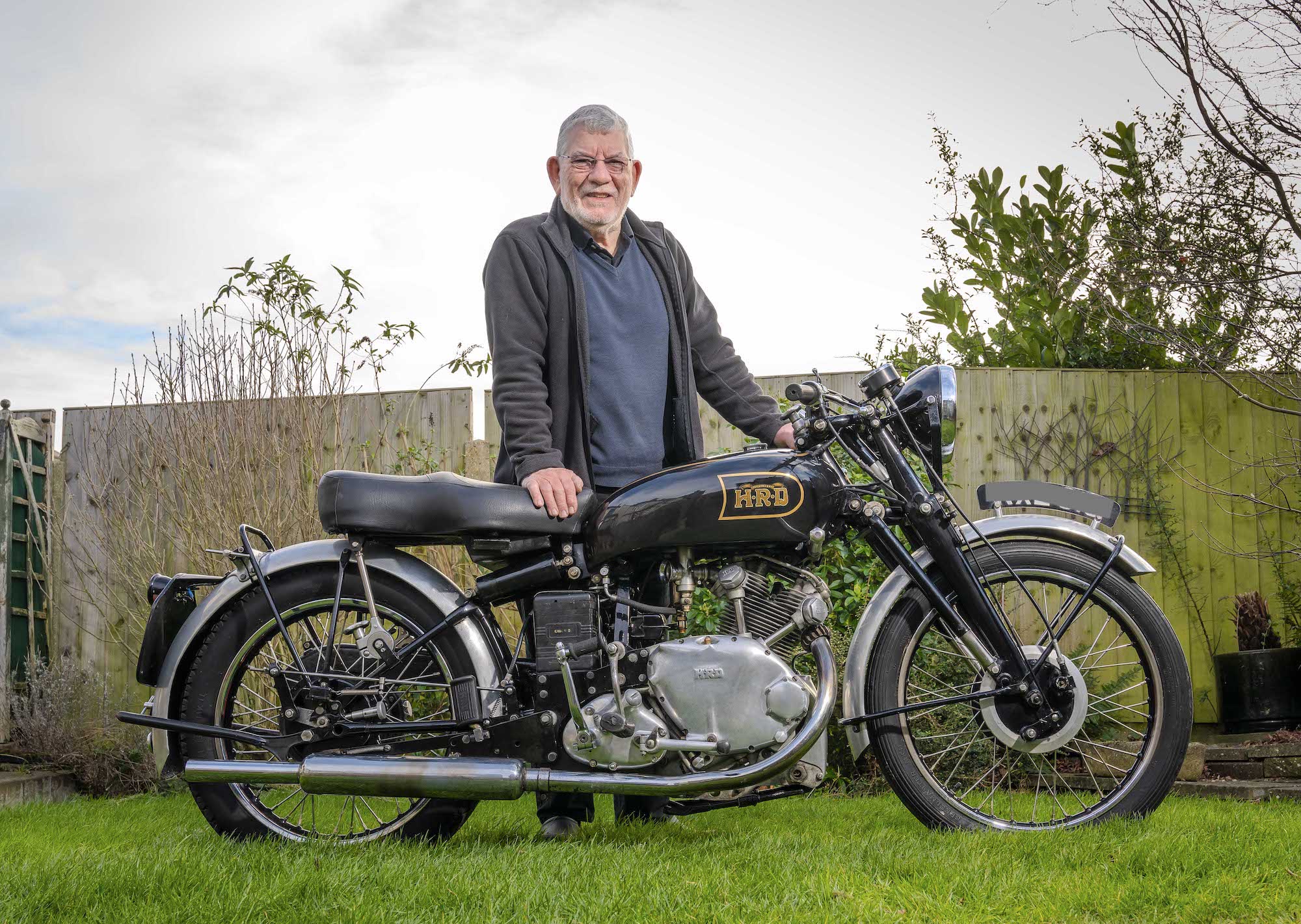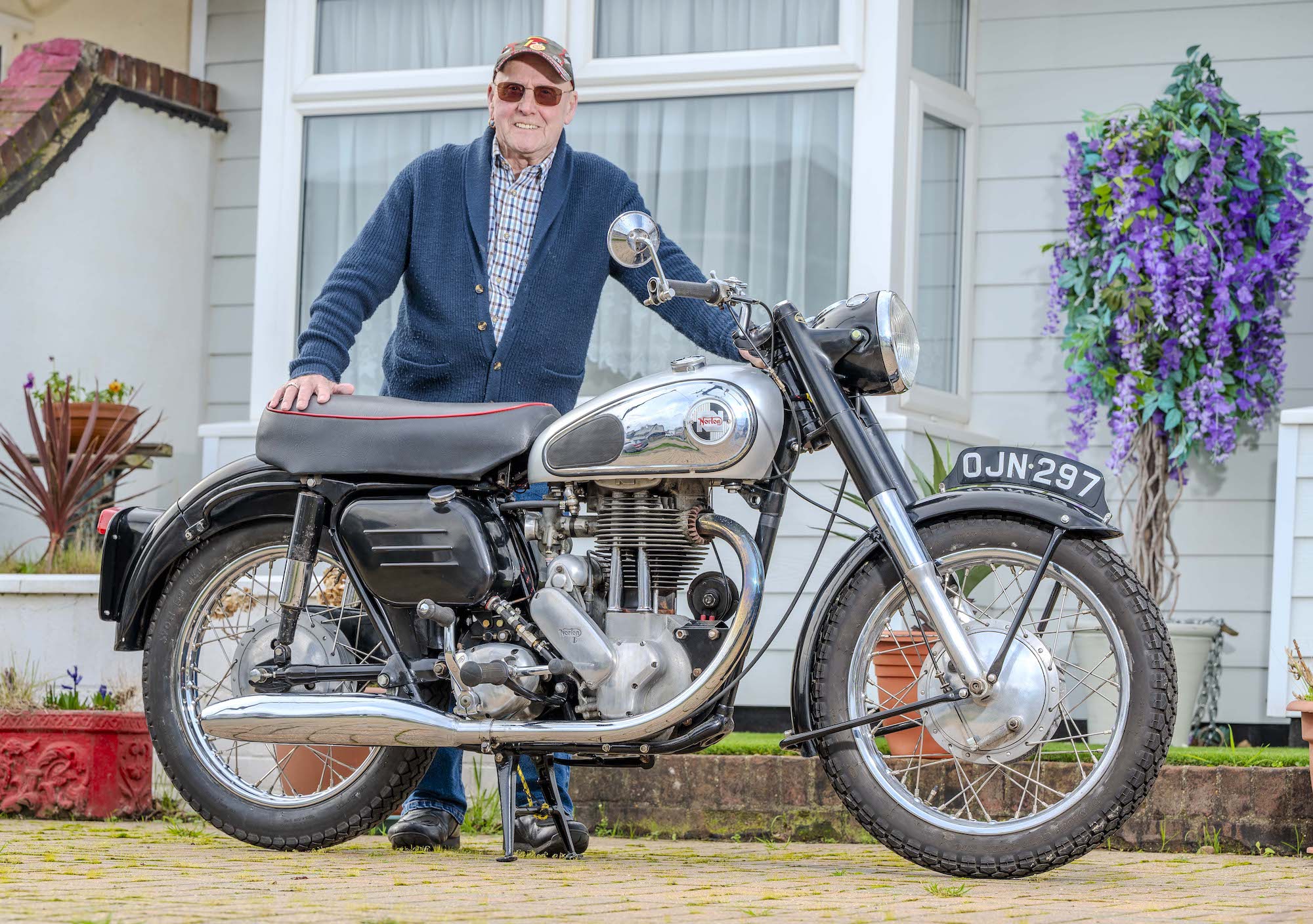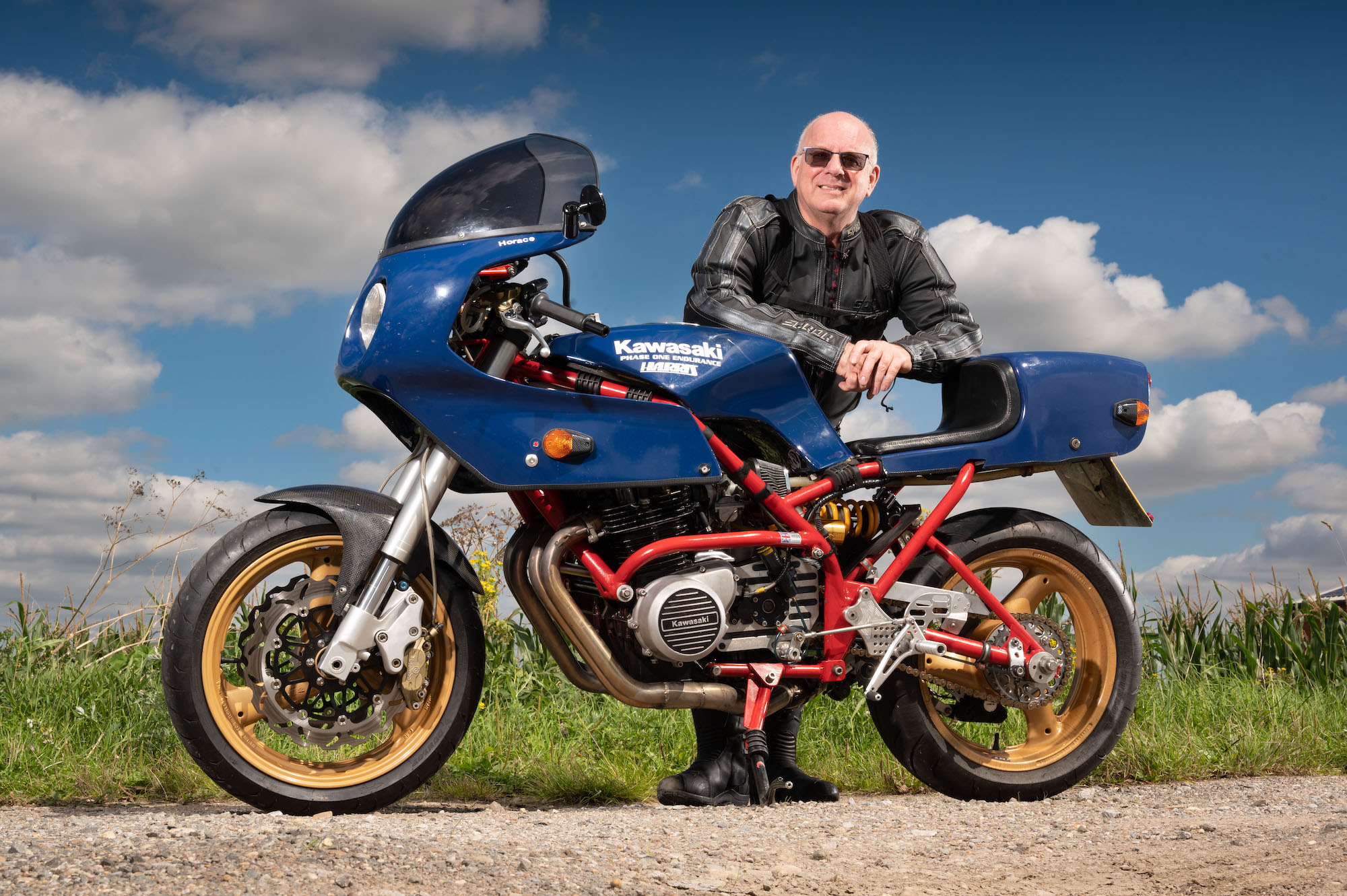Les White’s life can be split into two distinct parts, separated by February 20, 1976, the day he bought the new Honda CB400F Super Sport that’s been with him ever since.
“I recall things that happened in my life as either before or after that date,” he says on a frosty morning at his Norfolk home. “I ask myself, ‘did I have the bike then?’
“It’s been the best part of my life, and I can relate to so many things with it.”
The 66-year-old carpenter and joiner paid £727 for what was arguably Japan’s first real sports bike, a sleek, purposeful machine with a Swiss watch of a 408cc, four-cylinder engine.
With its narrow and low handlebars, sporty, rear-set footrests, and those four chrome pipes swooping dramatically to the right before collecting into a beautifully tapered megaphone exhaust, the 400 Four just looked right.
“Fast, silent, and fun”
As Motorcyclist editor Dave Ekins wrote in 1975: “This is the coming of a new kind of motorcycle, fast, silent, and fun.”
Allied to typical Honda reliability, it was the “fast” part of that equation that chiefly appealed to a 23-year-old enthralled by the exploits of ‘70s icon Barry Sheene.
“He was starting to win all the Grand Prix, and everyone wanted to be Barry Sheene,” he says. “His style of riding a bike was different to everyone else, and everyone was hanging their knee out on roundabouts, shifting the centre of gravity and getting round the roundabout quicker.
“Riding it in those days was fantastic – the M1 used to be empty and you could fly along.”
At the time, Les was living in Edgware, north London, and working at the NEC in Birmingham, a rapid hop along Britain’s first full-length motorway.
“In those days you could get on the M1 from Edgware by going round the back streets and up the slip road,” he remembers, that particular shortcut closed off years ago.
“On a Sunday, going back for work on a Monday, I could go door-to-door from Edgware to Coventry in an hour and 10 minutes.
Summer fun
“I’m talking about a summer’s day, with the wind behind you, body lying flat on the tank, feet on the pillion footrests. I put it in sixth and just held it there.”
Born in Islington, when he was a teenager Les’s family moved to Burnt Oak in Edgware when their post-war prefab, temporary homes built to replace bombed-out housing, was torn down.
“They called it slum clearance at the time,” he says. “They flattened three roads of prefabs, and now Whittington Park is where those houses were.”
After leaving school at 15, Les entered a five-year apprenticeship as a carpenter and joiner for a large building company, where he “learned a bit of everything,” moving from department to department.
It was while on block release at Tottenham Technical College, getting lifts on a mate’s Suzuki 380, that he first thought: “I’ve got to get my own bike.”
“I worked on another site and met other blokes into bikes, and bought myself a little 125cc Honda from Rex Judd, but I only had that for about two weeks,” he says.
“I need a bigger bike”
“We rode to the Isle of Wight but I had trouble keeping up with everyone! It was too small and slow and I went back to Rex Judd and said ‘I need a bigger bike’.”
The second hand Honda G5 he bought, a 250cc two-cylinder four stroke, proved more adept at keeping pace, even if it was “a lot slower than all the two-strokes that were around at the time, which were phenomenally quick”.
By the mid 1970s, the British motorcycle industry was on life-support but, despite the dominance of technologically superior Japanese bikes, many traditionalists held on to their belief that British was best.
Les, who only briefly had a BSA Bantam, wasn’t one of them.
“I can remember I used to do a pub crawl around all the Young’s pubs,” he says. “One was a biker’s pub and British bike riders would say ‘there’s only one way to start a bike and that’s to kick it’, and call things like flashing indicators sissy.
“I’d say ‘what, you would rather put out a black gloved hand in the dark, would you?’
Sophisticated Japanese bikes
“The British bikes were big, noisy scary things that leaked oil all the time. Then the Japanese came along and that level of sophistication turned most people’s heads.”
By 1976, after about 18 months with the G5, Les was ready to move up to the next level, with a Honda 500 twin in his sights, and returned yet again to Rex Judd’s Edgware showroom.
“The 500 looked like a British bike, and I thought ‘I will have one of those’,” says Les.
“But Mr Little, I’ll always remember his name, said ‘you don’t want one of those, you want one of these 400 fours, it’s the best bike Honda has ever made’.
“He convinced me and I said ‘I will have one, but only if it’s the red one’ – they came in red or blue.
“He pointed to a crate, the third highest one and said ‘that’s your one there’, and I went back in the shop, paid the deposit and that was that.
“I insisted he change the tyres from Japanese Bridgestones, which in those days had a high nylon content and were no good in the wet, to Avon Roadrunners.”
Lively performance
He was immediately sold on the bike’s looks, handling and lively performance.
“There wasn’t a lot went past you on the road, and I went all over the country on it,” he remembers.
“My mates from Chelsea were diving club members and I used to go to places like Falmouth and Brixham with the diving club.”
Even though he didn’t dive himself, one such trip to the south west saw Les get considerably more wet than his friends who did…
“They all went off on the Friday to Brixham, but I had overtime on the Saturday morning and said I’d meet them there in the afternoon,” he says.
“I jumped on the bike at West Hampstead, with all the stuff already packed – sleeping bag, toothbrush, pants and socks.
“Off I went and I don’t think I had got more than about 50 miles when it started pouring with rain.
“I had a one-piece, nylon oversuit for showers – it was not fully waterproof, but I stuck that on underneath a flyover.
“I could feel myself getting wetter and wetter, but thought to myself ‘I can’t stop now’, so I did the 300 miles, got to Brixham and found them in the pub looking like a drowned rat.
“My mate Eddie was concerned I was getting hyperthermia, which I wasn’t, but I did do the classic thing of going to the launderette and sitting there in my underpants while my clothes went round in the dryer, with Eddie bringing me brandy to warm me up. I didn’t even like brandy!”
Pub prank
Closer to home, one Friday evening Les was due to meet his mates at the Royal Scot, a large pub in Mill Hill, when he agreed to a dare.
“I rode the bike up the steps, through the doors, through the bar and out the other side!” he laughs.
“I went straight home, changed for a night out and went back to the pub – without my bike – to meet my mates.
“’Whitey’, they said, ‘you missed some bloke ride through the pub on a motorbike’. Of course they knew who it was but the guvnor never and nor did the other customers. Happy days.”
Ironically, the pub was later turned into a drive-through KFC.
Then came the accident that saw the original frame replaced by one from the later mark 2, recognisable by the switch in location of the pillion footrests from the swing arm to the frame itself.
“It was just a case of going too fast,” he admits. “I took off over a hump-backed bridge, landed on the other side nicely, but then it went from underneath me when I tried to brake on loose gravel.
“It broke the frame and it was not the sort of thing you could weld back up again. By then Honda had stopped making the mark 1 frames, so the footrests were taken off the swinging arm, which was fitted to a new mark 2 frame.”
Mothballing the Honda
It was another accident, when someone pulled out in front of him, combined with fatherhood and a delayed insurance payout, that convinced Les to mothball the Honda in 1986.
“It was a bit of everything really,” he says, with four sons born between 1981 and 1986 helping to focus the mind.
“The insurance took so long to pay out, and I had all these kids – I can’t get them on a motorbike. It was getting a bit dangerous going to work on it; I didn’t know when I was going to get knocked off it again.
“While I was waiting for the insurance to pay out I started to strip it and pack it away into two old-fashioned tea chests. I bought new parts for it, new forks, rear mudguard, brake discs etc, accumulating them so I could put it back together again. I just kept stacking them in tea chests.
“I kept threatening to put it back together again… and 25 years went past.”
A lot has changed for Les in those 25 years, including a divorce and second marriage to Melanie, who also has four sons, and a move to a Norfolk village about four miles from the east coast.
He fell in love with the area while working for the BBC, building sets for TV shows including ‘Allo ‘Allo! and Dad’s Army and the film, Poppyland, all filmed in the county.
Sent to Norfolk
“Someone said to me ‘you’ve upset management again – they’re sending you to Norfolk’. What they don’t realise is, I actually liked it here,” he says.
Although Les kept putting off the rebuild, there was never any question he would one day get the Honda back on the road.
“Once you’ve been on a bike you want to get back on them,” he says. “Even when you’re sliding along the road at 30mph using your knees as a brake, with all that grit in your knees and the pain you go through for the first week afterwards, it never puts you off.
“Since the last day I got knocked off it I was always going to get it back on the road. That’s why I kept it, because it’s part of my life.
“It’s not like cars, I can just buy and sell them and not get attached to them. When you get on a bike you have to ride them, you become one with the bike.”
The move to East Anglia 14 years ago prompted Les to dig out the tea chests, handing them over to the Norfolk Motorcycle Museum at North Walsham to piece everything back together.
“The fellow at the museum was fascinated that I had all these new parts wrapped in brown paper with sealed plastic,” he says.
“He did a nice job of putting it back together and made it look nice, but he could not set it up right because he had never worked on fours.
“I found a local garage in Gorleston, Jay’s Bike N Trike, who could work on the old Jap fours.
“Ran like a dream”
“They stripped all the carbs down, put in new parts and rebalanced them, and it ran like a dream afterwards.”
So what was it like getting back in the saddle of a bike that means so much after a 25-year hiatus?
“It’s just like I remember it,” he says. “As soon as I hit the roundabouts I thought I was Barry Sheene again.
“I can remember when I used to be able to put the footrests on the ground, but because of my age something holds me back now.
“If you go and break your leg in your 60s it’s not going to knit together again like it would in your 20s!”
These days, the bike is reserved for local journeys, including fundraising runs for Centre 81, a Great Yarmouth-based charity that helps people with disabilities.
As for the future, Les will keep riding as long as he can, before passing the Honda to youngest son, Adrian, who rides a modern Aprilia, but with one proviso.
“I’ve said I will give him the bike if he sticks it in the Norfolk Motorcycle Museum, but he will always keep the paperwork so he will always be able to get it out of there,” he says.
“I don’t think I want him riding around on it. I’m not going to to be responsible for him killing himself on my old bike. Maybe he can take it to rallies and just pootle around.”
Whatever the distant future holds for Les’s Forever Bike, the here and now involves plenty more miles on a reliable old friend that’s never let him down.
